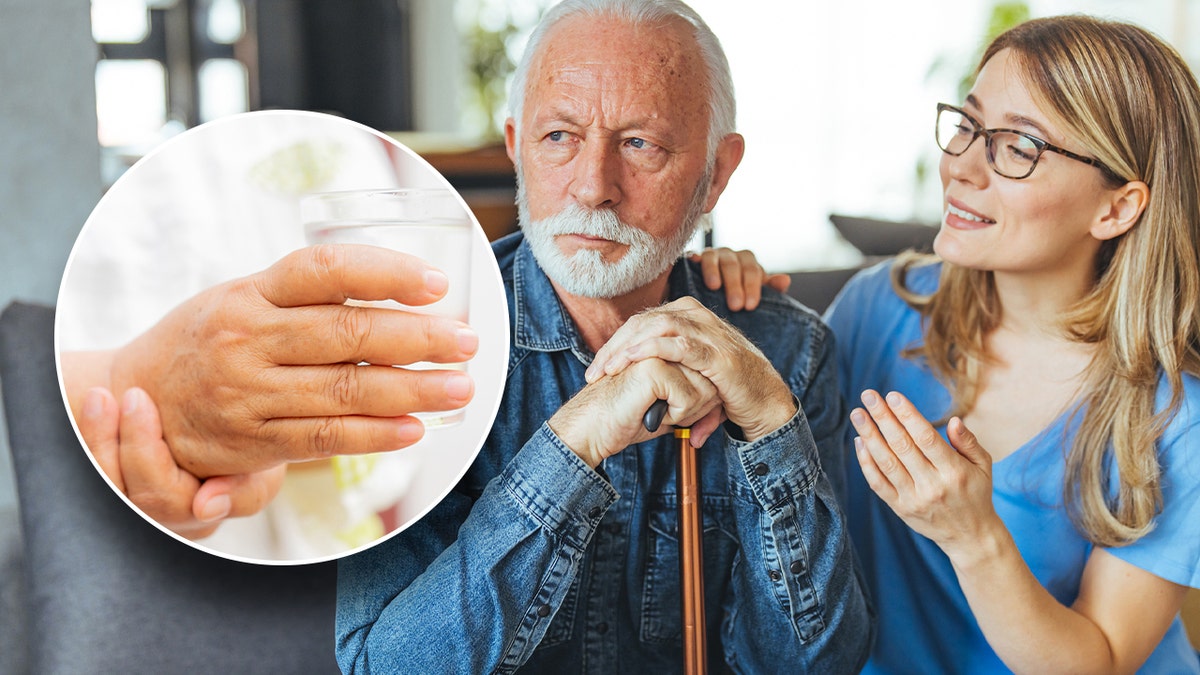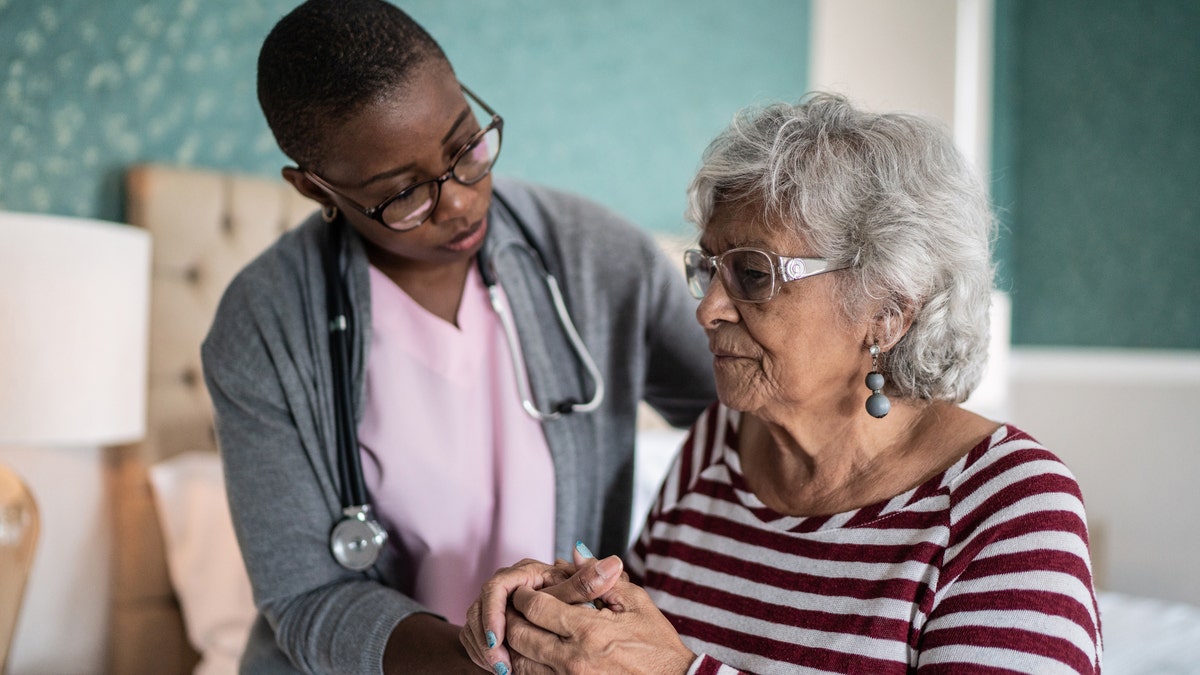Older generations are often diagnosed with Parkinson’s disease
Parkinson’s disease affects millions of people around the world.
There are actually 10 million people on a worldwide scale that have the neurodegenerative disorder, according to the Parkinson’s Foundation.
The parts of the brain mainly impacted by the disease are the dopamine-producing neurons in the substantia nigra, according to the source.
ALZHEIMER’S AND PARKINSON’S RISK IS HIGHER FOR PEOPLE WITH BODY FAT IN TWO SPECIFIC AREAS
Age is the biggest risk factor for the disease, with most people developing Parkinson’s after age 60, according to the National Institute on Aging (NIH).
Read on to learn more about Parkinson’s disease, including its symptoms, causes and treatment options.

Parkinson’s disease most often impacts those of older age, but can be seen in younger patients. (iStock)
Here are five things you should know.
- What are the symptoms of Parkinson’s disease?
- What is the cause of Parkinson’s disease?
- What is the life expectancy of someone with Parkinson’s disease?
- How do people cope with Parkinson’s disease?
- How is Parkinson’s disease treated?
1. What are the symptoms of Parkinson’s disease?
There are four main symptoms that are most common in someone with Parkinson’s disease, according to the NIH.
The main symptoms are tremors in the hands, arms, legs, jaw or head, muscle stiffness, slowness of movement, and impaired balance and coordination, which can lead to falls.
Other symptoms include depression, difficulty swallowing, chewing and speaking, urinary problems, or constipation and skin problems, according to the source.
2. What is the cause of Parkinson’s disease?
There is no one known cause of Parkinson’s disease, but there are factors that could increase risk. For most cases of the disease, the cause is unknown.
A person who is diagnosed without cause has what is called idiopathic Parkinson’s disease, according to Healthline.
The biggest risk factor for Parkinson’s disease is age, as it is more often seen in older people. Gender also plays a role because males are more likely to get Parkinson’s than females.

Tremors, often in the hands, are one of the most common symptoms associated with Parkinson’s disease. (iStock)
Repeated head trauma can increase a person’s risk, as can environmental factors like exposure to pesticides and herbicides used for farming.
3. What is the life expectancy of someone with Parkinson’s disease?
For the vast majority of Parkinson’s disease cases, a person’s life expectancy isn’t directly affected by the disease. It is typically not fatal, and a person diagnosed will have a normal or near-normal life expectancy.
This is the case for those with idiopathic Parkinson’s disease. Most diagnoses of Parkinson’s disease are idiopathic.
CLICK HERE TO SIGN UP FOR OUR LIFESTYLE NEWSLETTER
Those with atypical Parkinson’s have an increased disease progression and increased mortality, according to Healthline.
The life expectancy of a person with atypical Parkinson’s is around seven years after diagnosis, according to the Australian Journal of General Practice.
4. How do people cope with Parkinson’s disease?
People diagnosed with Parkinson’s disease may need to make certain changes to their day-to-day life, as tasks may be more difficult to accomplish than they used to be.

Those who are living with Parkinson’s disease will likely need assistance completing daily tasks. (iStock)
Keep in mind that with Parkinson’s diease, it may take more time to perform daily tasks, so certain household responsibilities may need to be readjusted.
It also can be helpful for Parkinson’s disease patients to be well-informed on the disease and how it can affect them.
Speak with your doctor to get the help that you need.
Overall, when living with Parkinson’s disease, it is important to spend time with loved ones, share feelings you have about the disease and not be afraid to accept help when it is needed.
For more Lifestyle articles, visit www.foxnews.com/lifestyle.
Prioritize tasks you need to get done, exercise regularly and always maintain open communication with loved ones, the Parkinson’s Foundation recommends.
If you begin to feel discouraged and signs of depression appear, which is a symptom of the disease, speak with your doctor to get the help that you need, the source says.
5. How is Parkinson’s disease treated?
Unfortunately, there is no cure for Parkinson’s disease, but there are ways to help alleviate symptoms.

While Parkinson’s disease itself is untreatable, there are many different methods used to help alleviate symptoms. (iStock)
Everyone’s treatment is going to look different based on what works best for that particular person.
Treatment options include supportive therapy, medication and, in certain cases, surgery, according to the National Health Service (NHS).
The main medication used to relieve Parkinson’s symptoms is levodopa, which is used in order to make dopamine replenish the brain’s low amount, according to NIH.
CLICK HERE TO GET THE FOX NEWS APP
Some people are also prescribed dopamine agonists, enzyme inhibitors, amantadine and anticholinergic drugs, according to the source.
A healthy diet, exercise, massage therapy and physical, occupational and speech therapies can also help with symptoms related to Parkinson’s disease, according to NIH.

